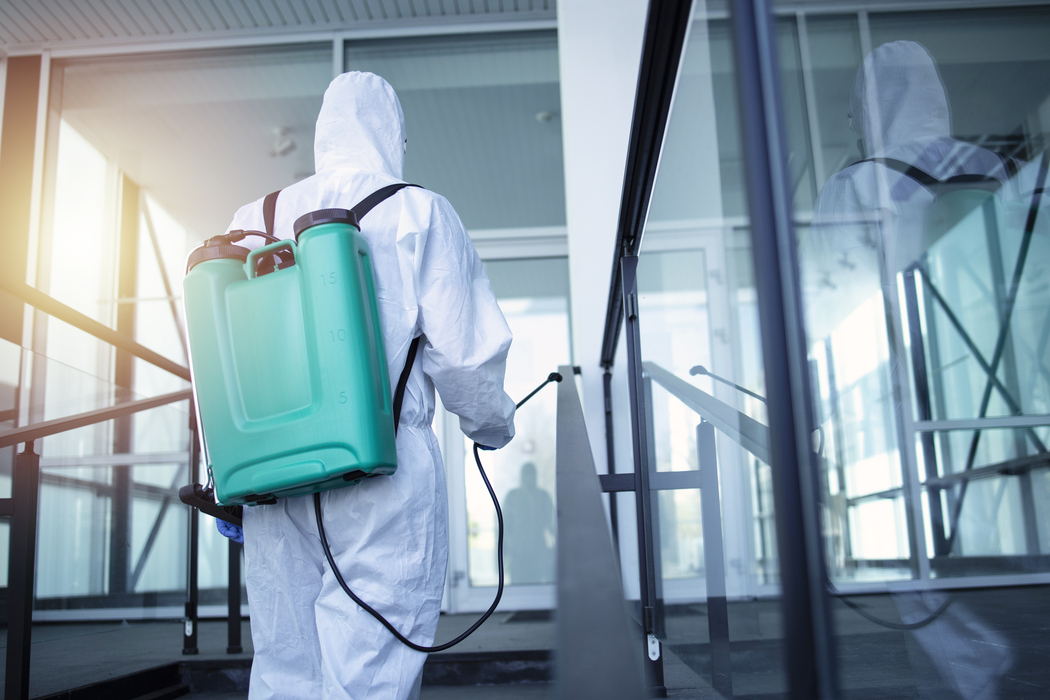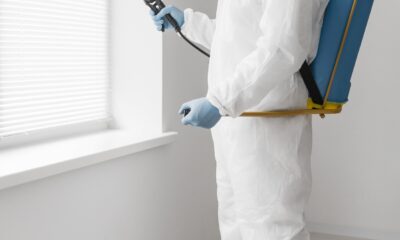Blog
Pest Control – How to Get Rid of Insects, Birds, and Vertebrates

Pest control is the process of getting rid of unwanted creatures. These creatures include insects, birds, and vertebrates. Getting rid of pests can be done by using traps and baits. These methods have proven to be effective in getting rid of unwanted creatures. However, if you’re looking for a more environmentally-friendly option, you should consider hiring a pest control company for pest inspection, termite control, or termite management system.
Insects
When used properly, insects can be a powerful pest control tool. While occasional insects are no problem, when they are a constant presence, they are a sign of infestation. Insects can bring diseases and bacteria with them. Some species can even cause intestinal illness. Not to mention that insect body parts and excrement can be harmful to the environment.
Fortunately, there are a variety of beneficial insects that can be used to help your home or business. These insects are helpful to your property, as they help counteract harmful insects that might otherwise cause damage. If you’re looking for a home or business pest control solution, you can find beneficial insects online or in a local store. Then, you can target the pest you’re looking to eliminate with a beneficial insect.
Vertebrates
The use of vertebrates for pest control is not limited to livestock. They are beneficial to humans in several ways. For instance, they can control ant populations, and they can also control insects. In some cases, introduced exotic predators are used to controlling vertebrate pests. However, these predators’ effectiveness may be affected by the ecosystem and extrinsic factors such as disease and human intervention. Lastly, there are also issues such as the availability of alternative food sources for these animals.
There is a need to develop biological control methods for vertebrates, particularly in places where pests are widespread and have evolved resistance to common pesticides. Unfortunately, most attempts have been ad hoc, and have not been based on careful studies. These studies would enable us to identify the factors that influence the natural enemy introduction and the conditions that promote a positive outcome. Furthermore, the failure of vertebrate biological control has led to the introduction of new species, which could create a number of problems. Get pest control service from atpmspest control they are the best pest control company in Australia.
Birds
Birds are a natural pest control option, but there are a few things to keep in mind when dealing with them. First, it is important to determine where and what the birds are causing the most trouble. If birds are causing damage to your property, it may be time to call in the professionals.
Not only do birds pollinate your plants, but they also have numerous health benefits. Many birds feed on insects and are beneficial to the ecosystem. They consume pest insects, including beetles, flies, and mosquitoes. They also damage wood, paint, and varnish.
Fish
If you have a mosquito problem in your home, you may want to try introducing a fish for pest control. Mosquitofish are herbivores that eat mosquito larvae and other small aquatic insects. They are believed to be an excellent alternative to insecticides and a natural way to control an infestation. These fish were first introduced to Ohio in 1947 and have since spread throughout the state. Although their introduction was controversial, they have since proven to be an effective pest control solution.
Fish can also help control plant-munching pests. Tachinid fly larvae feed on beetles, caterpillars, and grasshoppers. Tachinid fly larvae also feed on mealybugs.
Snakes
Snakes can serve as useful pest control in some situations. These reptiles are attracted to areas where they can find food, including trash and rodents. When a homeowner notices signs of snake activity in the yard, they should call a pest control company to get rid of the problem. They can also use snake repellant to keep snakes away from their home.
Although most snakes are harmless to humans, some species can pose a health risk to people. Snakes usually seek out places where rodents have built their burrows, as well as other food sources. If they aren’t able to find a good source of food, they’ll move on to other locations.
Biological
Biological pest control, or BPC, involves the use of living organisms to control pests. It can be used to control a wide variety of pests, including insects, weeds, and plant pathogens. The techniques used for BPC vary depending on the type of pest. For example, classical BPC uses decapitating flies to control thrips and stem borers. However, these methods can take a long time to produce the desired results.
Biological control differs from other approaches because it does not try to establish a natural enemy population or a host-prey balance in a particular habitat. Biological control employs agents, such as fungi, bacteria, and viruses, which are released in high enough quantities to suppress pest populations. Most commercially available insect pathogen formulations are used in this fashion.
Chemical
Chemical pest control is a common method used by farmers to control pests. It works by killing pests and preventing them from reproducing. However, this method is not without its drawbacks. In some instances, it can harm the environment or cause health problems. This is why you need to understand how to handle chemical pesticides safely.
Before using any chemical pest control method, be sure to read the label. You should avoid using chemicals that are incompatible with each other. These chemicals will not mix properly and can harm the environment. Moreover, you should always follow the directions on the label. It is also important to keep the sprays out of children’s reach. You should also not use more than necessary.
-
Blog1 year ago
MyCSULB: Login to CSULB Student and Employee Portal – MyCSULB 2023
-
Android App3 years ago
Cqatest App What is It
-
Android1 year ago
What Is content://com.android.browser.home/ All About in 2023? Set Up content com android browser home
-
Software2 years ago
A Guide For Better Cybersecurity & Data Protection For Your Devices
-
Latest News2 years ago
Soap2day Similar Sites And Alternatives To Watch Free Movies
-
Android2 years ago
What is OMACP And How To Remove It? Easy Guide OMACP 2022
-
Android3 years ago
What is org.codeaurora.snapcam?
-
Business2 years ago
Know Your Business (KYB) Process – Critical Component For Partnerships























